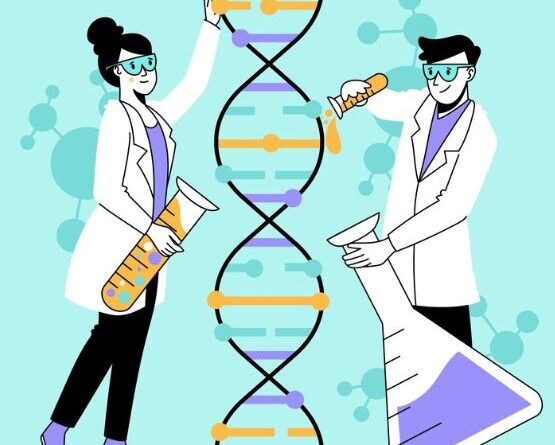Can genes change due to environment
Can Genes Change Due to Environmental Influences?
In the age-old debate of nature versus nurture, scientists have long sought to understand the extent to which our genetic makeup, or nature, and our environment, or nurture, shape who we are. While it’s widely accepted that genes play a significant role in determining our traits and characteristics, the influence of the environment on our genes is a topic of ongoing research and debate. Can genes change due to the environment? Let’s delve into this intriguing question and explore the complex interplay between our genes and the world around us.
Understanding Genes: The Blueprint of Life
Before we explore how genes may change in response to the environment, let’s first understand what genes are and how they function. Genes are segments of DNA that contain the instructions for building and maintaining the structures and functions of living organisms. They serve as the blueprint for everything from our physical traits, such as eye color and height, to our susceptibility to certain diseases.
Genetic Variation: Embracing Diversity
One of the most remarkable aspects of genetics is the concept of genetic variation. While humans share approximately 99.9% of their DNA, it’s the remaining 0.1% that accounts for the incredible diversity observed among individuals. This variation arises from differences in our genetic sequences, known as alleles, which can influence traits ranging from hair texture to metabolism.
The Influence of the Environment
While genes provide the foundation for our biological makeup, the environment plays a crucial role in shaping how these genes are expressed. Environmental factors such as diet, exercise, stress, and exposure to toxins can all impact gene activity through a process known as epigenetics. Epigenetic modifications, which do not alter the underlying DNA sequence but can affect how genes are turned on or off, serve as a bridge between our genetic code and our environment.
Epigenetics: The Link Between Nature and Nurture
Epigenetics encompasses a variety of mechanisms that regulate gene expression without changing the underlying DNA sequence. These mechanisms include DNA methylation, histone modifications, and non-coding RNA molecules, all of which can influence how genes are activated or silenced in response to environmental cues.
DNA Methylation: Adding Methyl Groups to the Genetic Code
One of the most well-studied epigenetic modifications is DNA methylation, which involves the addition of methyl groups to specific regions of DNA. Methylation patterns can be influenced by environmental factors such as diet, stress, and exposure to pollutants, and can impact gene expression by altering the accessibility of DNA to the cellular machinery responsible for gene transcription.
Histone Modifications: Rewriting the Chromatin Landscape
Histones are proteins that serve as spools around which DNA is wound, forming a structure known as chromatin. Chemical modifications to histone proteins can alter the packaging of DNA, making it either more or less accessible to the cellular machinery that reads and interprets genetic information. Like DNA methylation, histone modifications can be influenced by environmental factors and play a critical role in regulating gene expression.
Non-coding RNAs: Fine-Tuning Gene Expression
In addition to DNA methylation and histone modifications, non-coding RNAs, such as microRNAs and long non-coding RNAs, also contribute to the regulation of gene expression. These RNA molecules can bind to messenger RNAs (mRNAs), preventing them from being translated into proteins or targeting them for degradation. By modulating the levels of specific mRNAs, non-coding RNAs can fine-tune gene expression in response to environmental stimuli.
Can Genes Change? The Role of Environmental Influences
Given the dynamic nature of epigenetic modifications, it’s clear that our genes can indeed change in response to environmental influences. Studies have shown that factors such as diet, stress, exposure to pollutants, and even social interactions can alter epigenetic marks and thereby impact gene expression. For example, research has demonstrated that prenatal exposure to maternal stress can lead to changes in DNA methylation patterns in offspring, with potential implications for health and development later in life.
Conclusion
In conclusion, the question of whether genes can change due to the environment is not a simple yes or no answer. While our genetic makeup provides the blueprint for our biological inheritance, the environment plays a crucial role in shaping how these genes are expressed. Through epigenetic mechanisms such as DNA methylation, histone modifications, and non-coding RNAs, environmental influences can alter gene expression patterns and contribute to the diversity observed among individuals. By gaining a deeper understanding of the interplay between nature and nurture, we can unlock new insights into human health and disease and pave the way for personalized approaches to medicine and wellness.
FAQs
Q. Do genes adapt to the environment?
Ans. Genes themselves do not adapt, but gene expression can be influenced by the environment through epigenetic mechanisms.
Q. Can genetic disorders be caused by the environment?
Ans. Yes, environmental factors such as exposure to toxins or stress can contribute to the development of genetic disorders.
Q. Can genes be changed after birth?
Ans. While the DNA sequence remains unchanged, gene expression can be modified by environmental factors throughout life.
Q. What are 3 factors that influence gene expression?
Ans. Three factors that influence gene expression include environmental cues, epigenetic modifications, and cellular signaling pathways.




